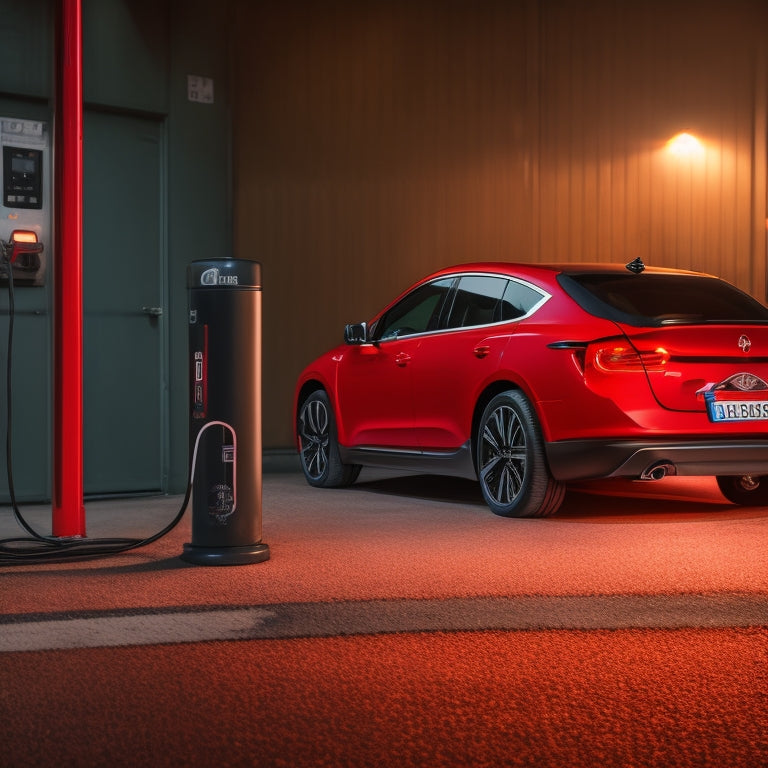
Funds Exhausted: Electric Vehicle Incentive Program Closed
Share
The Electric Vehicle Incentive Program, which provided financial incentives for purchasing or leasing eco-friendly vehicles, has closed due to depleted funds. This program was a competitive option for those seeking environmentally friendly transportation. Although it is no longer available, understanding its details is essential for making informed decisions. Low-income residents were eligible for doubled incentives through specific programs. Fortunately, alternative programs, such as the CA Clean Vehicle Rebate Project, offer similar benefits. Exploring these options can help individuals find suitable alternatives to support their move to eco-friendly transportation. Further investigation reveals a range of opportunities for those seeking affordable, environmentally responsible solutions.
Key Takeaways
• The Electric Vehicle Incentive Program has closed due to fund exhaustion, affecting purchases or leases made after July 1, 2023.
• Low-income residents may still be eligible for doubled incentives through programs like LIHEAP, Medi-Cal, or CalFresh.
• Alternative incentive programs, such as the CA Clean Vehicle Rebate Project, offer improved EV affordability and accessibility.
• These alternative programs provide significant savings to reduce upfront EV costs, supporting a shift to eco-friendly transportation.
• Understanding program details and alternative options helps make informed decisions for eco-friendly transportation within budget.
Electric Vehicle Incentive Details
The Electric Vehicle Incentive Program, which is currently closed due to fund exhaustion, provided incentives to eligible applicants who purchased or leased electric vehicles on or after July 1, 2023.
The program's closure has left many wondering about the EV incentive application process and how it compares to other incentive programs.
A thorough incentive program comparison reveals that the Electric Vehicle Incentive Program was a competitive option for those looking to switch to eco-friendly transportation.
Although the program is currently unavailable, it's crucial to understand its details to make informed decisions when exploring alternative EV incentive opportunities.
Low-Income Eligibility and Benefits
Low-income residents, eligible through verifiable programs such as LIHEAP, Medi-Cal, or CalFresh, may receive doubled incentives for purchasing or leasing electric vehicles, providing an added financial benefit to environmentally conscious transportation. This benefit is designed to make eco-friendly options more accessible to those who need it most.
To qualify, residents must provide proof of low-income status through one of these verifiable programs. W-2 or Form 1040 forms are not accepted as eligibility proof.
Alternative Incentive Programs
Beyond the Electric Vehicle Incentive Program, various alternative programs offer incentives for purchasing or leasing electric vehicles, including the CA Clean Vehicle Rebate Project, 3CE, CA Clean Fuel Reward, Driving Clean Assistance, Access Clean California, and PG&E Pre-Owned EV Rebate Program.
These alternative incentives can help improve EV affordability, making eco-friendly transportation more accessible to a wider audience. By exploring these programs, individuals can find alternative solutions to support their shift to electric vehicles.
These incentives can provide significant savings, reducing the upfront cost of purchasing or leasing an EV. By taking advantage of these alternative incentives, individuals can prioritize their environmental concerns while staying within their budget.
Frequently Asked Questions
Can I Apply for the Electric Vehicle Incentive Program Now?
Did you know that 60% of electric vehicle owners charge their vehicles at home? Regarding the Electric Vehicle Incentive Program, applications are currently not being accepted due to funds exhaustion, and the program timeline indicates a first eligible purchase/lease date of July 1, 2023.
Are There Other Funding Opportunities for Electric Vehicle Purchases?
Explore alternative funding opportunities, including state incentives, corporate discounts, and programs like CA Clean Vehicle Rebate Project, 3CE, and Access Clean California, to support your electric vehicle purchase.
How Do I Find a Public Electric Vehicle Charging Station?
To find a public electric vehicle charging station, utilize online Station Locators like PlugShare.com or the US Department of Energy's Alternative Fuel Data Center, and remember to practice good Charging Etiquette, such as avoiding blocking charging spaces and respecting time limits.
What Is the Average Cost of an Electric Vehicle?
The average cost of an electric vehicle (EV) varies, but prices range from $30,000 to over $100,000, depending on factors like battery size, range, and brand, with considerations like battery life expectancy and charging time variance impacting overall value.
Are Plug-In Hybrids Eligible for the Incentive Programs?
Plug-in hybrids are eligible for incentive programs, offering improved fuel efficiency and reduced emissions, meeting stringent emissions standards, and providing an intermediary step towards fully electric vehicles, aligning with environmental sustainability goals.
Related Posts
-

3 Best Eco-Grants for Home Energy Upgrades
You're eligible for various eco-grants that can help you cut down on energy bills and reduce your carbon footprint by...
-

Why Choose Cool Roofs in Scorching Climates?
You opt for cool roofs in scorching climates because they enable you to reclaim control over your energy consumption ...
-

10 Grid-Tied Wind Power Systems for Modern Homes
You're looking for a grid-tied wind power system to utilize wind energy for your modern home. Here are ten options to...


